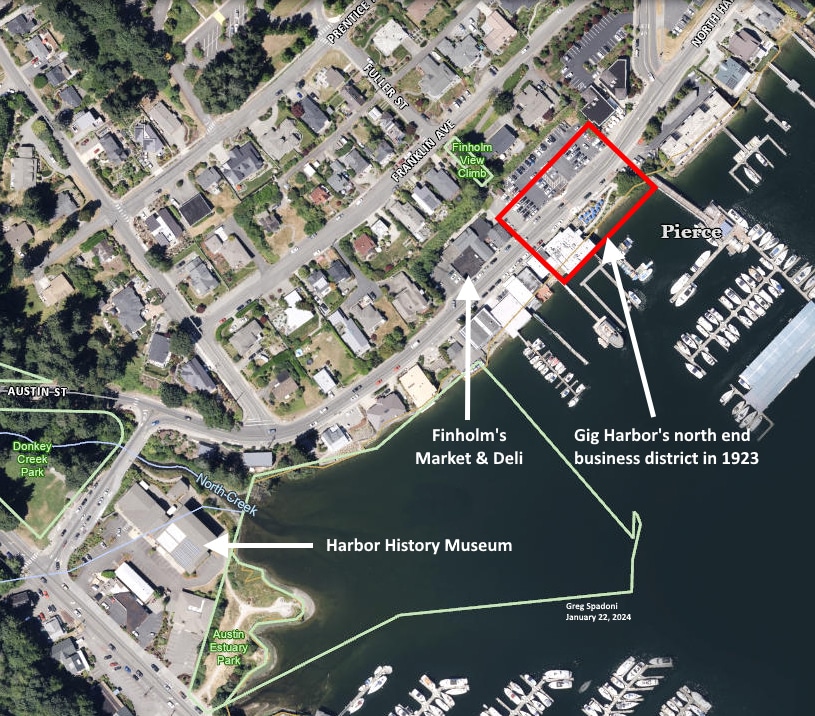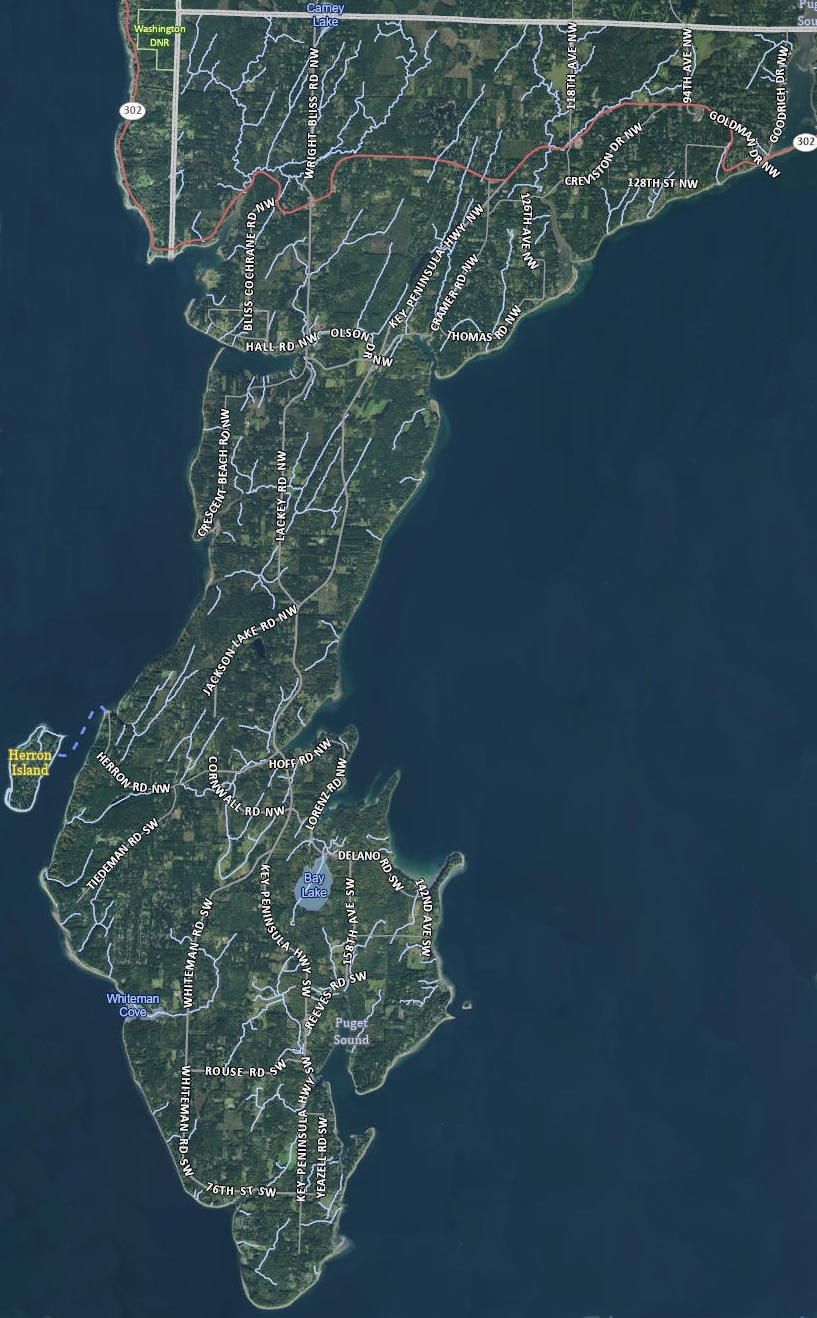Arts & Entertainment Community
Gig Harbor Now and Then: Steel buckets and hard work put out 1923 fire
Gig Harbor Now and Then’s question from last time concerned a major fire at the north end of Gig Harbor in 1923 that destroyed several waterfront buildings. A group of unorganized volunteers saved all the structures on the opposite side of the road.
Arts & Entertainment Sponsor
Arts & Entertainment stories are made possible in part by the Gig Harbor Film Festival, a proud sponsor of Gig Harbor Now.
Question: What firefighting equipment did the unorganized Gig Harbor volunteer fire fighters have in May 1923?
Answer: Forty galvanized steel buckets.
The 40 buckets amounted to the entire inventory of firefighting equipment owned by the then-defunct Gig Harbor volunteer fire department during the north end business fire in May 1923.

Forty galvanized steel buckets were the only firefighting equipment available to Gig Harbor’s unorganized volunteers in May 1923. While not much, it was enough to save several buildings from complete destruction.
To prevent the structures on the uphill side of the street from catching fire when the waterfront buildings were too far gone to save, the 100 or more amateur firefighters formed a bucket brigade.
Starting on the beach near high tide, the string of volunteers dipped their buckets in salt water from the bay and handed them off to the next person in line. The procession continued up the bank, across the concrete road, and to every building threatened by the roaring fire on the waterfront.
The flames that jumped the road — setting the post office, Munden’s meat market, and a private home on fire — were defeated by the continuous flow of sloshing water pails.
At the same time, the bucket brigade moved the empty pails back to the beach for refilling.

Gig Harbor’s north end business district in 1923 is now mostly a parking lot and vacant waterfront. Pierce County Assessor-Treasurer aerial base map.
Newspaper called for an upgrade
The editor of the local weekly newspaper, The Bay-Island News, noted the firefighters’ limited equipment and called for a new effort to establish a volunteer fire department: “About 18 months since, the local Improvement [club] started a movement which resulted in the formation of a volunteer fire department. Dissension in the ranks of the new organization killed it, but not until after the purchase of 40 large galvanized pails—and it was those pails in the hands of the volunteers which saved nearby buildings and held the flames to their source of origin.
“At the time the volunteer organization was formed it was the declared purpose to supply them with a hook-and-ladder outfit and chemical fire extinguishers. As the radical members who then killed the movement have departed for other locations, The News suggests that now is the proper time to complete the outfitting of the firemen’s organization. The personal (sic) is O. K. and all they lack is equipment.”
The same 40 buckets had put out the flames at the Edgar and Lennie Patrick home on the east side of the bay when it caught fire in late 1921. Unlike the buildings saved at the head of the bay in 1923, their house remains standing to this day.
I wonder how many galvanized steel pails Gig Harbor Fire & Medic One carries to every call in 2024?
A Gig Harbor Now and Then retraction
We now present the first (and with any luck, the last) Gig Harbor Now and Then retraction. We made a statement in the Jan. 15 column that in the future we would be featuring more unidentified photos from the Harbor History Museum collection, asking for readers’ help to figure out who or what the subjects are.
Due to the utter failure in that same column of our segment featuring the picture that might be of Irwin Rust (from this point forward to be known derisively as The Great Necktie Disaster of 2024), we hereby retract that statement.
It takes entirely too much time and effort to put together a photo identification piece destined only to fall flat on its face. Instead, we can come up with other types of filler that fail equally well with a lot less work. Our next column’s digression will be proof positive of that.
Balloons of fire
From a partial victory over fire in the north end of Gig Harbor, we now move to a failure of fire on the Key Peninsula.
While not nearly as spectacular as a brand-new Boeing B-17 heavy bomber crashing in Burley, there was a second unique incident on the Key Peninsula during World War 2 that’s not well known. Unlike the first, the second was enemy driven.
World War 2 was not yet winding down near the end of 1944. In the Pacific Theater, there were many horrific battles yet to come, but it was already clear that the United States would eventually prevail.
Because it was losing, Japan was becoming ever more desperate in its attempts to stop the Americans’ advance towards its home islands.
In October the Japanese introduced the most infamous of their last-ditch efforts, the kamikaze. The suicide bombers were savagely effective, but not decisive. The following month, Japan began sending hydrogen-filled balloons across the Pacific Ocean towards North America.
Each balloon, about 33 feet in diameter, supported a multi-explosive payload at the end of shroud lines, about 45 feet below the gas-filled paper bag. Among the explosives were usually four incendiary devices and a single anti-personnel bomb. The incendiaries were designed to start forest fires; the anti-personnels to kill people.
In an unlikely and totally random event, one of the Japanese incendiary balloons landed on the Key Peninsula on February 28, 1945.
The questions this week are:
Where did the Japanese incendiary balloon land on the Key Peninsula?
Why was the landing of the balloon not reported in the press?
What was the major flaw of the incendiary balloon program?
We’ll have the answers on Feb. 12. We’ll also have a new question of local history … if we can think of one. As always, submit your answers to the above questions on the Gig Harbor Now Facebook page.

A Japanese incendiary balloon landed somewhere on the Key Peninsula during WW2.
Greg Spadoni of Olalla has had more access to local history than most life-long residents. During 25 years in road construction working for the Spadoni Brothers, his first cousins, twice removed, he traveled to every corner of the Gig Harbor and Key Peninsulas, taking note of many abandoned buildings, overgrown farms, and roads that no longer had a destination. Through his current association with the Harbor History Museum in Gig Harbor as the unofficial Chief (and only) Assistant to Linda McCowen, the Museum’s primary photo archive volunteer, he regularly studies the area’s largest collection of visual history. Combined with the print history available at the Museum and online, he has uncovered countless stories of long-forgotten local people and events.

